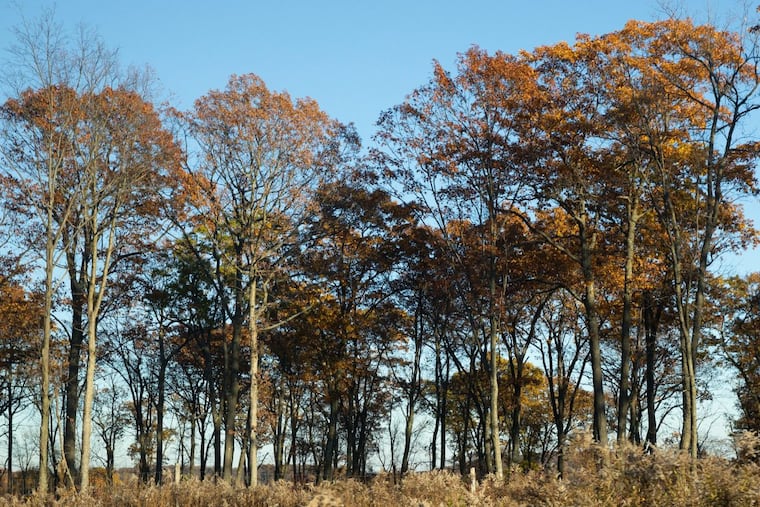Pennsylvania is planting 10 million trees to curb pollution in waterways
A collaborative partnership of Pennsylvania officials and environmental groups plans an ambitious goal of planting 10 million trees in Pennsylvania over the next few years. The trees will be planted along streams as a cost-effective way to protect waterways, prevent erosion, and cleanse drinking water sources.

It's going to take a lot of sweat and muscle to plant 10 millions trees, but Pennsylvania says it has the might.
State officials, along with federal and local partners, announced an ambitious plan to plant that number of trees by the end of 2025 within a key watershed as a way of controlling pollution in rivers and streams.
The effort is coordinated by the Chesapeake Bay Foundation. The commonwealth's involvement is critical to cleanup of the bay. The Susquehanna River basin, spanning 27,000 square miles, drains into the bay as part of its watershed and is a major source of its pollution. For example, Lancaster releases 750 million gallons of sewage mixed with stormwater annually into the Conestoga River. The Conestoga flows into the Susquehanna and ultimately the Chesapeake.
Officials gathered on the Garber Farm in Manheim, Lancaster County, on Tuesday to announce the Keystone 10 Million Trees Partnership. But the collaborative effort got underway several weeks ago and is getting help from conservation organizations, outdoors enthusiasts, businesses, and residents. It is placing particular importance on plantings in Lancaster County and other areas of south central Pennsylvania because of nitrogen pollution from agricultural operations.
Already, partners have started planting, and hope to put in 31,000 trees at 50 sites by the end of April.
"The commonwealth is significantly behind in meeting its pollution-reduction commitments," said William Baker, president of the Chesapeake Bay Foundation, "and the Keystone 10 Million Tree Partnership will accelerate efforts to close that gap."
Baker was referring to Pennsylvania's Clean Water Blueprint, which calls for 96,000 acres of new, forested buffers to be planted along the watershed. That equates to about 8.5 million new trees to be installed at an average density per acre recommended by restoration experts. Adding trees to other locations, such as abandoned mine land, brought the total to 10 million.
Specifically, the new trees are expected to reduce the 4.6 million pounds of nitrogen, 22.2 million pounds of sediment and 43,000 pounds of phosphorus that would have flowed into waterways. Overall, such buffers have the potential to reduce 90 percent of nitrogen in runoff and 80 percent of phosphorus. The trees will be a mix of 130 native species such as oak, hickory, maple, dogwood, red bud, sycamore, and honey locust.
"Planting a tree is one of the most impactful conservation practices anyone can do," said Cosmo Servidio, administrator for EPA Region 3. He said trees absorb the stormwater, filtering out pollutants and preventing erosion.
A single deciduous tree can intercept up to 750 gallons of water per year, according to the partnership's literature.
B.J. Small, a spokesman for the Chesapeake Bay Foundation, said the trees are coming from Musser Forests and Octoraro Native Plant Nursery, both in Pennsylvania. He said the trees will come in a mix of forms from root balls to saplings, but won't be seeds or mature trees. He also said there was no total cost of the project available because money is coming from multiple sources, including the foundation and grants, and will be spread over seven years.
To accomplish the 10 million tree goal, members of the partnership say, they will need more help.
"Many hands make light work," said Harry Campbell, the Chesapeake Bay Foundation's executive director for Pennsylvania. "We encourage organizations, business, schools, and anyone else concerned about restoring and protecting Pennsylvania's waters, to sign up as partners."
Officials say anyone wanting to get involved should examine the planting events map, and fill out this form or call 717-234-5550.